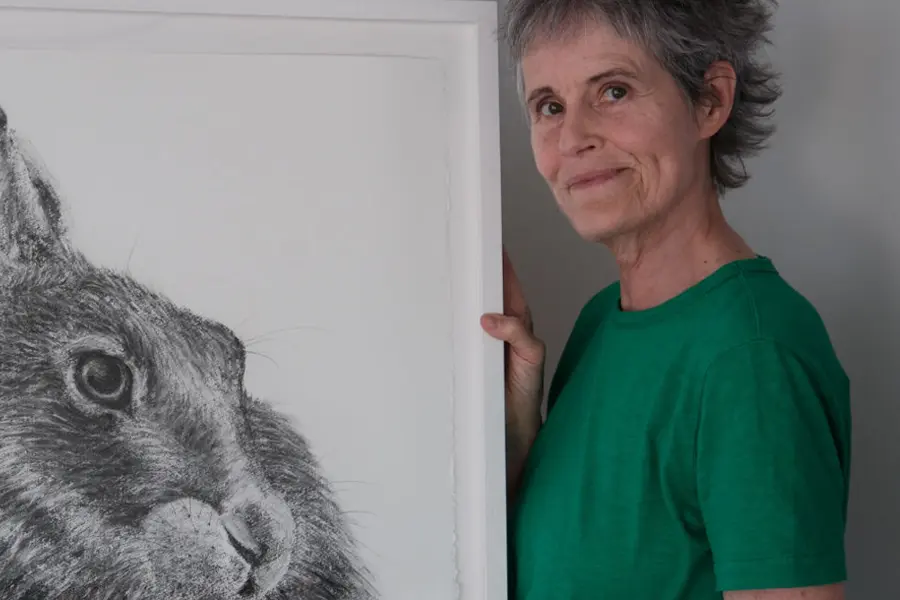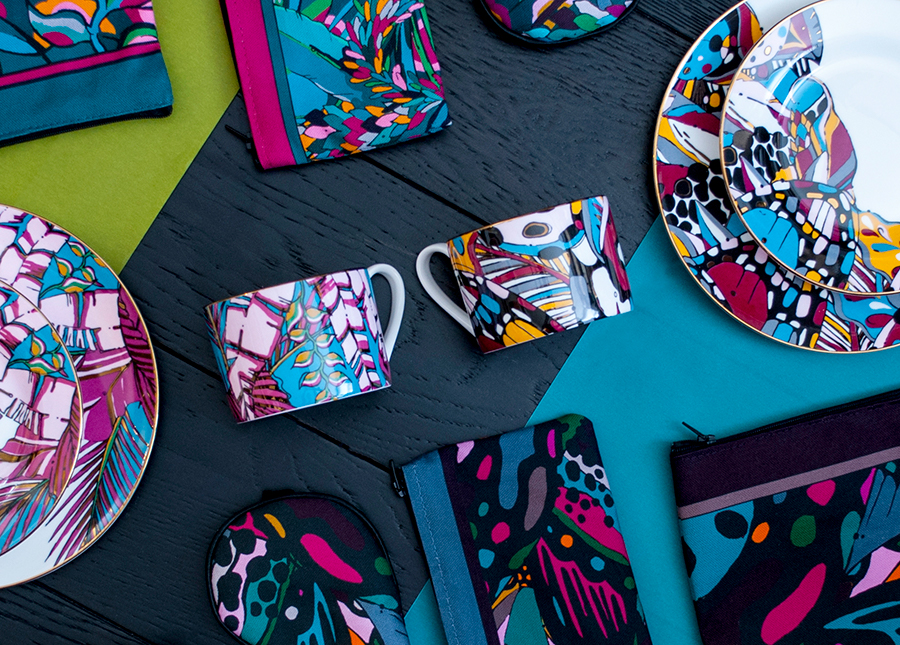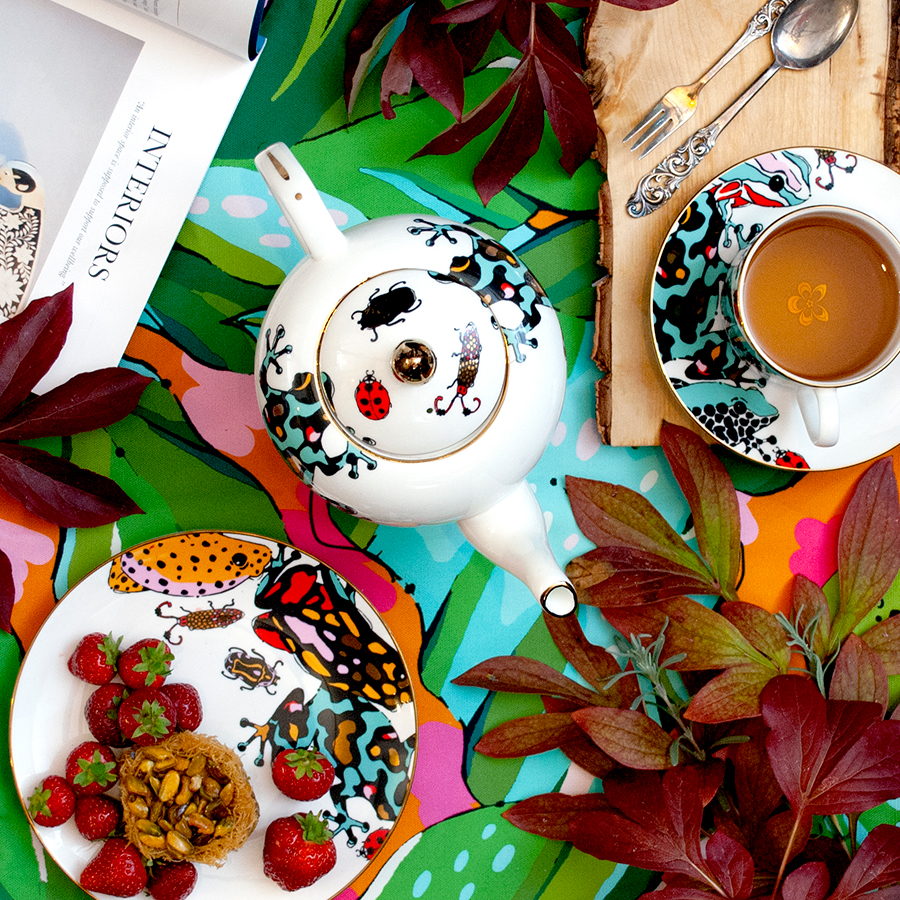No products in the basket.


Introducing a new homeware and lifestyle brand House of Hopstock. Based in London the luxury homewares brand focuses on bold aesthetics, based around the prints of Norwegian born illustrator and designer Aase Hopstock.
Can you tell us your journey into the creative and design world?
My journey into the creative world began early, in some ways it feels like I was born into its path as I was most happy as a child with a handful of crayons and some blank paper, constantly drawing. When I was a teenager I decided, after spending far too much time designing my dream wardrobe, that I wanted to become a fashion designer. I grew up in a small town in Norway, and the world ‘elsewhere’ seemed to be full of other exotic forms of beauty and creativity that I longed to be a part of.
I decided to spend a year in New Zealand as an exchange student, where I took a course in dressmaking, and after completing secondary school in Norway I returned to Auckland to study fashion design, specialising in costume design. It turned out that the idea of working in costume design was more fulfilling than the reality, and I quickly changed gears and moved to London to study footwear design. I then spent almost ten years working in the footwear industry, including setting up my own brand, but again, the reality of the industry started to wear on me.
There was a sense of hollowness in the fast-fashion system, of appreciating hype and a name over design and quality, and as the demand for ‘something new’ increased to the point of ridiculous I decided to take a step back and assess. What I really wanted to create was something striking, beautiful, accessible, and sustainable, but most importantly it had to have a sense of permanence. So I decided to go back to my first love, drawing, and set up House of Hopstock as a brand based around my bold and vibrant artwork.
We love your colourful designs. How would you describe your relationship with colour and when and how you apply it?
I have always been drawn to vibrant colours, particularly the ones on the red, pink, and orange side of the spectrum. I love how colour resonates, how it lifts you up or soothes you, the way you can use it to change how a room, space, outfit or object makes you feel. I have never understood the sentiment ‘too bright’ or ‘too colourful’, as colour to me is life itself, it is protagonist in my understanding of beauty. And to me beauty is one of the most important principles of art and design, grossly underestimated in terms of how it affects both private and public space.
When I set up House of Hopstock I knew immediately that how I used colour would be the cornerstone of the design process, and it is one of the things our customers respond to the most, which makes me very happy.
I met your at Grand Designs earlier this year. How challenging is the business side for you as a creative?
The business side of House of Hopstock can be challenging, for sure, but I get satisfaction from learning new skills as I go. I think the most important thing is identifying areas you need the most help with, and outsourcing them to whatever extent you can, be it sales, financials, or IT. I enjoy the relationships you forge along the way, with clients, factories, shops, suppliers and other creatives. Ultimately these are the people you learn the most from, the ones who will teach you about their craft, tell you about their own journey, and work with you to bring about new exciting ideas.
I have also been lucky enough to have had great support along the way, especially from UAL who gave me the opportunity to take part in the Pulse show, and Barbara Chandler (the design editor of the Evening Standard) who selected House of Hopstock to take part in Grand Designs, as well as 100% Design.
Having your own brand can often become insular, a case of me-myself-and-I, but it’s impossible to succeed on your own, and nurturing good relationships becomes vital. It certainly helps when you’re stuck doing non-creative things like website management or accounting, to know that there are wonderful people out there who have your back.
This edition is about sustainability. What processes you have to make your business more sustainable?
At the moment ‘sustainable’ and ‘ethical’ seem to be adopted by anyone and everyone as an empty marketing ploy, which is good for awareness but does nothing to promote real change.
To me, sustainability and ethics go hand in hand and includes paying attention to production, materials, work process, packaging and waste, longevity of product, ability to repair, and giving back. It also means being transparent and honest with your customers. In terms of production this means sourcing it as locally as possible so that you have an awareness of both working conditions, health and safety, waste management and other environmental factors, as well as reducing emissions from shipping.
Sustainability is also about work force and craft, about people and skills. I am proud to say that the velvet we use is woven on Britain’s last remaining velvet mill, and our silk scarves are hand hemmed by new mothers who cannot go back to work yet but still need income. In terms of materials it is important that I know where the fabrics we use are produced, and to keep pushing the suppliers to offer more recycled and unbleached options, as well as fibres such as hemp and bamboo. All our packaging is unbleached, recycled and recyclable, and all waste from the studio and design process is recycled.
All our products are meant to be permanent, so nothing is ever ‘last season’ and therefore suddenly disposable. They are meant to bring you joy today, tomorrow, forever. Which is why we don’t offer new designs or products every few months, and why our products are in the premium bracket. Buy less, buy better. And if something breaks or becomes worn we urge you to contact us for help with repairs, because we believe that mending is vital, not just for our products but for all areas of our lives – do not toss something away simply because it is chipped or cracked, make an effort to mend it instead.
Lastly, I am very conscious that any brand involved in production has an impact on society and the environment, and I would like for House of Hopstock to have a positive impact. I want to be able to support some of the habitats I take creative inspiration from, which is why 10% of all sales from our Fatal Attraction collection are donated to the Rainforest Trust, supporting Amazon Rainforest regeneration projects.
Can you tell us more about your collections and future plans?
All our collections are inspired by curious creatures or specific themes, and drama and flamboyance seems to always take centre stage. There are currently five permanent collections, with the most recent one being Collidoskope, inspired by the collage art and unmatched fabulousness of the artist Lee Krasner. Our original collection Rare Bird is inspired by four sensational women and their style, including Frida Kahlo, Isabella Blow, Dita von Teese and Marcesa Luisa Casati, all depicted as four birds. Then there is the lovely ‘frog & bug’ collection Fatal Attraction, inspired by aposematism, which is when animals and plants develop bright colours to indicate their toxicity.
Deadly Bloom, our deliciously dark floral collection, follows a similarly dramatic path and is inspired by the world’s most deadly flowers. Lastly the more delightful and sunny Shangri La, our iconic palm print, is inspired by the overwhelmingly beautiful flora of Penang, in Malaysia. Of course, it still features opulent delights such as the ‘lipstick palm’, and ‘lobster claw plant’. It seems impossible to create a print that doesn’t at least have some sense of glamour and decadence to it.
As for the future for House of Hopstock, that is somewhat of an open question, as it is for all of us in these Covid-19 times. House of Hopstock will certainly have to change, the amount of collections and products we offer might be more carefully curated in the coming year, really bringing that focus onto quality and longevity of style, urging the customer to buy better and appreciate real value. Now more than ever, sustainability is going to be the core of how we operate.
Ideally I want to see House of Hopstock collaborate more with other likeminded brands, particularly fashion and furniture. I will probably spend more time creating limited edition art prints, to allow myself more time to do what I really love. And lastly, after launching wallpaper earlier this year, and hopefully launching fabric by the meter in the near future, I will finally be able to focus on more interior projects, and drape a room from head to toe in House of Hopstock. A maximalist’s dream come true.


To find out more about House of Hopstock, please visit the website: houseofhopstock.com
Follow House of Hopstock on Instagram.
READ ANOTHER BRAND STORY HERE.
Sign up to our newsletters and we’ll keep you in the loop with everything good and important going on in the worlds of design, art and independent retail.
By subscribing you agree to receive updates from ESTILA. We will not share your data with any third parties. Read our full privacy policy here.

We are a media and membership platform for design-led brands, interior designers and artists. Find latest industry news, insights, products, projects and contacts.
Join our “In the Loop” fortnightly design & art newsletter and never miss latest news from the industry.
CONNECT & LEARN
Copyright © 2015-2024 created and managed by STUDIO/ESTILA. All rights reserved | Terms & Conditions | Privacy Policy | Cookie Policy | Refund Policy